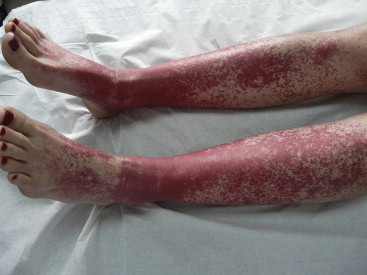Parvo is one of the most serious illnesses that can affect dogs, especially young puppies. It spreads quickly, is highly contagious, and can turn life-threatening if not treated right away.
You can suspect parvo if your dog shows signs like sudden lethargy, loss of appetite, vomiting, foul-smelling or bloody diarrhea, fever, and dehydration. Immediate veterinary care is essential for accurate diagnosis and effective treatment.
This guide will walk you through symptoms, stages, treatment, and prevention in simple, clear language every pet parent can understand.
Parvo is a dangerous virus that attacks a dog’s intestines, blood cells, and sometimes the heart. Puppies and unvaccinated dogs are at the highest risk of contracting the disease.
It spreads easily through infected poop, dirty surfaces, or even on shoes and hands. Signs often include vomiting, diarrhea, and extreme tiredness.
Parvo is serious but preventable with vaccines. Knowing what it is and catching it early can make a big difference in keeping your dog safe and healthy.

Yes, adult dogs can still catch parvo, though it’s most common in puppies. Unvaccinated or under-vaccinated adult dogs are especially at risk, and older dogs with weakened immune systems may also become ill.
Even if your dog looks strong, without protection, they’re vulnerable to infection. Vaccination is the safest way to prevent parvo, no matter the age.
Keeping up with boosters ensures your dog stays protected and avoids the danger of this serious, contagious virus.
- Lethargy – your dog may appear weak, tired, and less playful than usual.
- Loss of appetite – refusing meals, showing no interest in food or treats.
- Fever – a noticeable rise in body temperature; your dog may feel hot to the touch.
- Vomiting – frequent, often with a foul odor and sometimes yellow or clear liquid.
- Diarrhea – watery, severe, often bloody, and with a very strong smell.
- Abdominal pain – whining, a hunched back, restlessness, or discomfort when touched.
- Rapid heart rate – especially common in puppies as their body struggles to fight infection.
- Collapse or breathing trouble – in severe cases, dogs may suddenly collapse or struggle to breathe, which requires urgent veterinary care.
Dogs usually get parvo by coming into contact with infected poop, but the virus can also live on grass, floors, bowls, toys, or even on shoes and clothes.
That means your dog doesn’t need to come into contact with another sick dog to catch it. Puppies are especially at risk because their immune systems are still developing.
Keeping your pup away from high-traffic dog areas until fully vaccinated is one of the safest ways to prevent infection.

Humans cannot catch the dog version of parvo, but you can accidentally spread it between dogs. The virus is resilient and can adhere to your hands, shoes, or clothing after contact with an infected dog or a contaminated area.
If you pet a sick puppy and then touch another dog, you might pass it along. Washing your hands, changing clothes, and disinfecting surfaces are simple but important steps to keep your dog and others safe from parvo.
Also Read: Why Is My Dog’s Nail Turning Black – Causes and Care Tips!
Vets usually diagnose parvo with a quick stool test called a SNAP ELISA, which can give results in about 10 minutes.
While it’s accurate, sometimes very sick dogs may test negative if the virus isn’t being shed at that moment. In such cases, blood work or laboratory tests may be necessary.
If your puppy shows classic symptoms, such as vomiting and bloody diarrhea, don’t wait for home tests—professional testing is the only safe way to confirm parvo quickly.
Parvo starts when a dog swallows the virus, usually from contaminated poop, soil, or objects. The virus is tough and can survive for months in the environment.
Once inside, it attacks rapidly dividing cells, especially in the intestines and bone marrow, setting the stage for a severe illness if not detected and treated promptly.
The incubation stage usually lasts 3–7 days after infection. During this time, the virus is multiplying inside your dog’s body, but outward signs may not be obvious yet.
Your dog may seem a little tired, lose appetite, or feel “off.” Because symptoms aren’t clear, this stage is when parvo silently builds up before striking hard.
This is when parvo shows its full force. Dogs often develop vomiting, bloody diarrhea, dehydration, fever, and extreme weakness.
Puppies are hit the hardest because their immune systems are still immature. Without quick vet care, this stage can be fatal. Early treatment is crucial—it can mean the difference between losing a puppy and helping them survive.

Treating parvo requires urgent veterinary care because the virus can be deadly if left untreated. Since there’s no direct cure, treatment focuses on keeping your dog stable while their body fights the infection.
Veterinarians usually administer IV fluids to prevent dehydration, prescribe medications to stop vomiting and diarrhea, and sometimes administer antibiotics to control secondary infections.
Hospitalization is often needed, especially for puppies. With fast care, survival chances improve greatly, but delaying treatment can be life-threatening.
Acting quickly when you notice symptoms is the safest way to give your dog a fighting chance against parvo.
Read Out: Why Do Dogs Chew Their Nails: Comprehensive Guide In 2025!
The cost of parvo treatment can vary widely depending on your dog’s condition and the level of care needed.
On average, hospitalization, fluids, and medications may range from $1,000 to $5,000. Puppies with severe cases often require longer stays, which adds to the expense.
While this can be overwhelming, many vets offer payment options, and pet insurance can help cover costs. The investment is worth it, as timely treatment could save your dog’s life.
Preventing parvo through vaccinations is far more affordable and is the best way to avoid high bills and heartbreak later.
Parvovirus is unusually hardy. It can survive in soil and on surfaces for months — sometimes longer under the right conditions — and it resists many common cleaners.
Bleach solutions are recommended for disinfection: a commonly advised household dilution is roughly 1 part household bleach to 30 parts water (for example, about ½ cup of bleach per gallon of water) with at least 10 minutes contact time on hard surfaces.
Clean organic debris first (dirt, feces), then apply disinfectant. For porous items (carpets, soft toys), washing with hot water and bleach where safe, steam cleaning, or discarding heavily contaminated soft items may be necessary.
Recovery from parvo requires time, patience, and careful care at home following veterinary treatment.
Once your dog is stable, they’ll still be weak and need rest, hydration, and a bland, easy-to-digest diet.
Their immune system will be vulnerable, so keeping them away from other dogs is important until your vet confirms they’re safe.
Cleaning and disinfecting your home and yard is also crucial, as the virus can persist in the environment for months.
With close monitoring, vet checkups, and gentle support, many dogs make a full recovery and can return to their happy, healthy lives.
The most effective way to protect your dog from parvovirus is through timely vaccinations. Puppies should start their shots at 6–8 weeks and complete the full series for lasting protection.
Until fully vaccinated, avoid dog parks, kennels, or areas where unknown dogs have been. Keep your home and yard clean, and always pick up waste promptly to minimize the risk.
If you bring a new puppy home, don’t let them mix with unvaccinated dogs. Vaccination is a simple, safe, and far more cost-effective alternative to treatment. Preventing parvo is not only easier but also the most important way to keep your dog safe.
At home, watch for symptoms such as vomiting, diarrhea (often accompanied by blood), loss of appetite, and sudden weakness. Puppies may also have a fever or severe dehydration.
If your dog shows these symptoms, treat it as a medical emergency. Parvo moves fast, so contact your vet immediately instead of waiting for signs to worsen.
The first signs typically include tiredness, refusal to eat, and mild vomiting or diarrhea. Puppies may seem less playful and sleep more than usual.
These early symptoms can resemble a stomach bug, but with parvo, they worsen rapidly. Acting fast gives your dog the best chance of survival.
The best medicine for parvo isn’t one single drug — it’s strong supportive care. Vets give IV fluids, anti-vomiting medicine, antibiotics, and sometimes antiviral shots to help your dog fight the virus and stay hydrated while healing.

In the final stages, puppies become extremely weak, stop eating or drinking, and often collapse. Vomiting and diarrhea may be continuous, sometimes with blood and a foul smell.
Severe dehydration, weight loss, and shock follow. Without emergency treatment, organ failure and death can happen within just a few days.
Parvo often begins with a loss of energy and appetite on the first day. By day two, vomiting and diarrhea begin.
Days three to four usually bring bloody diarrhea, dehydration, and worsening weakness. Without treatment, symptoms rapidly progress to shock and death within five to seven days. Quick vet care saves lives.
Dogs catch parvo by coming into contact with infected poop, contaminated surfaces, or even on shoes and clothing.
Puppies are most at risk since their immune systems are weak. The virus spreads easily in parks, kennels, and yards, which is why vaccination is the safest way to prevent infection.
There’s no direct cure for parvo, but supportive vet care saves many dogs. Treatment usually includes IV fluids, anti-nausea medication, antibiotics, and round-the-clock monitoring.
Puppies may require hospital stays until they can keep food down and fight off infections. Rapid veterinary treatment is the only effective way to combat parvo.
Near-death signs include extreme weakness, pale gums, constant vomiting, bloody diarrhea, and a sudden drop in body temperature.
Puppies may collapse or struggle to breathe. At this stage, survival chances are very low without immediate, intensive vet care. Recognizing these signs early is critical to saving your dog’s life.
The first signs are tiredness, loss of appetite, vomiting, and watery diarrhea. Puppies may seem weak and less playful. Early veterinary care increases the likelihood of survival.
Puppies are safer after completing all parvo vaccines, usually by 16–20 weeks. Until then, avoid areas with risk and contact with unvaccinated dogs to stay protected.
Yes, but use gloves, wash your hands, and disinfect surfaces. Parvo spreads easily, so keeping things clean is important to protect other dogs from infection.
Survival depends on early treatment. With fast vet care, many puppies recover. Without treatment, the chances are very low. Quick action makes the biggest difference.
Parvo poop is usually watery, often bloody, and has a strong, foul smell. It can change quickly from soft stool to severe, life-threatening diarrhea.
Parvo is a deadly but preventable disease that affects dogs, especially puppies. Recognizing early signs, such as vomiting, bloody diarrhea, and weakness, is vital for survival. Quick veterinary treatment significantly improves recovery chances, while prevention through timely vaccinations remains the most effective form of protection. Keeping your dog safe from contaminated areas and practicing good hygiene further lowers risks. With awareness, care, and prevention, you can protect your furry friend from the dangers of parvo.
